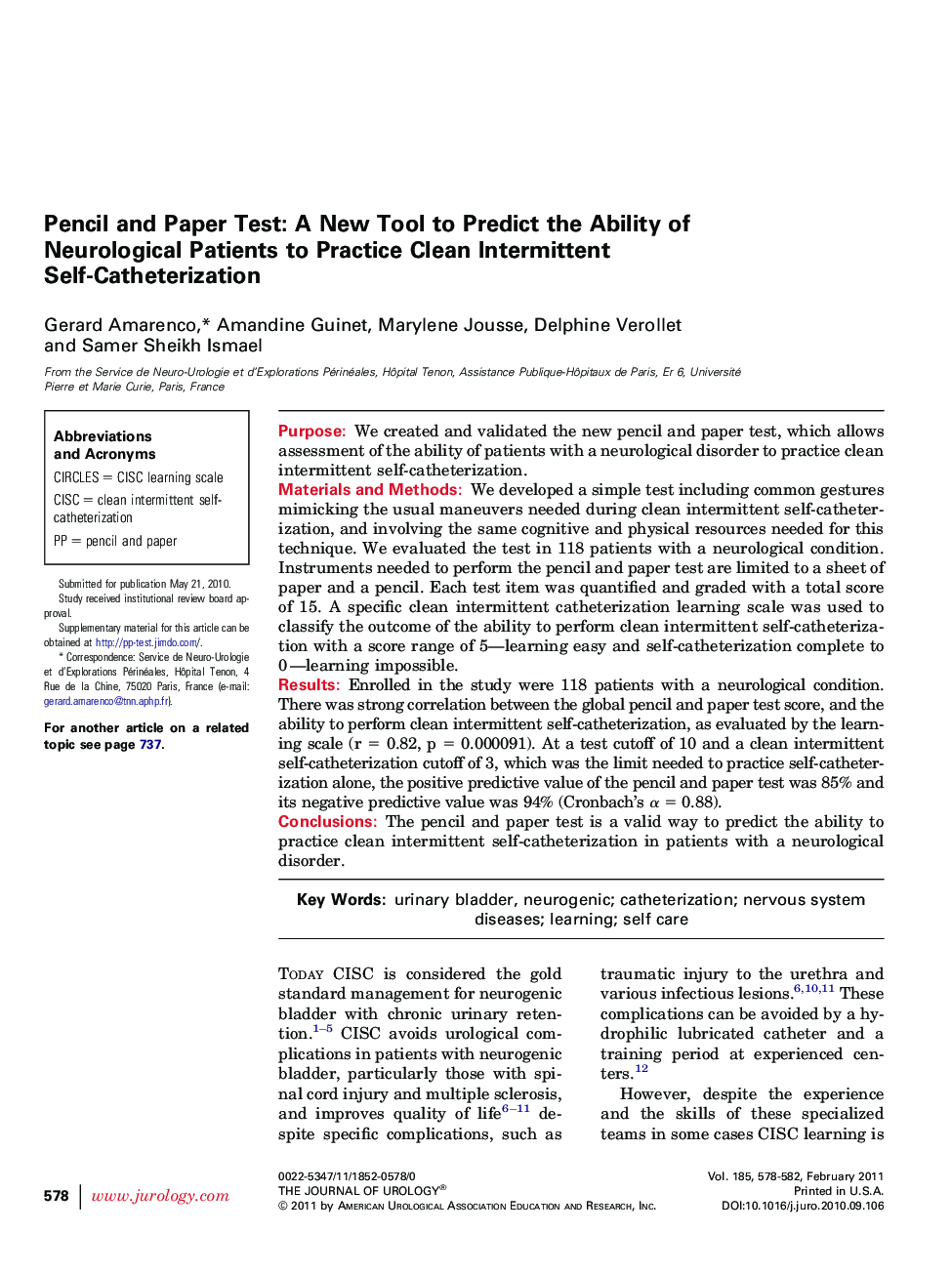| Article ID | Journal | Published Year | Pages | File Type |
|---|---|---|---|---|
| 3871258 | The Journal of Urology | 2011 | 5 Pages |
PurposeWe created and validated the new pencil and paper test, which allows assessment of the ability of patients with a neurological disorder to practice clean intermittent self-catheterization.Materials and MethodsWe developed a simple test including common gestures mimicking the usual maneuvers needed during clean intermittent self-catheterization, and involving the same cognitive and physical resources needed for this technique. We evaluated the test in 118 patients with a neurological condition. Instruments needed to perform the pencil and paper test are limited to a sheet of paper and a pencil. Each test item was quantified and graded with a total score of 15. A specific clean intermittent catheterization learning scale was used to classify the outcome of the ability to perform clean intermittent self-catheterization with a score range of 5—learning easy and self-catheterization complete to 0—learning impossible.ResultsEnrolled in the study were 118 patients with a neurological condition. There was strong correlation between the global pencil and paper test score, and the ability to perform clean intermittent self-catheterization, as evaluated by the learning scale (r = 0.82, p = 0.000091). At a test cutoff of 10 and a clean intermittent self-catheterization cutoff of 3, which was the limit needed to practice self-catheterization alone, the positive predictive value of the pencil and paper test was 85% and its negative predictive value was 94% (Cronbach's α = 0.88).ConclusionsThe pencil and paper test is a valid way to predict the ability to practice clean intermittent self-catheterization in patients with a neurological disorder.
